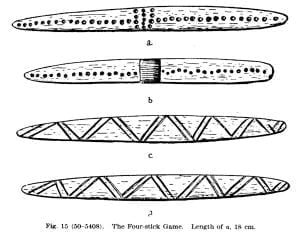The Blackfoot Mother-in-Law Taboo
The preceding may be a phase of the well-known mother-in-law taboo. Among the Blackfoot, still, a man should not speak to his mother-in-law, or even look at her. The taboo is equally binding upon her. If one is-discovered about to enter the tipi where the other is present, some one gives warning in time to avoid the breach. Should the son-in-law enter, he must make her a present to mitigate her shame; should the mother-in-law offend, she must also make a small return. However, as usual with such taboos, there are ways of adjusting this restriction when necessary. If the … Read more



